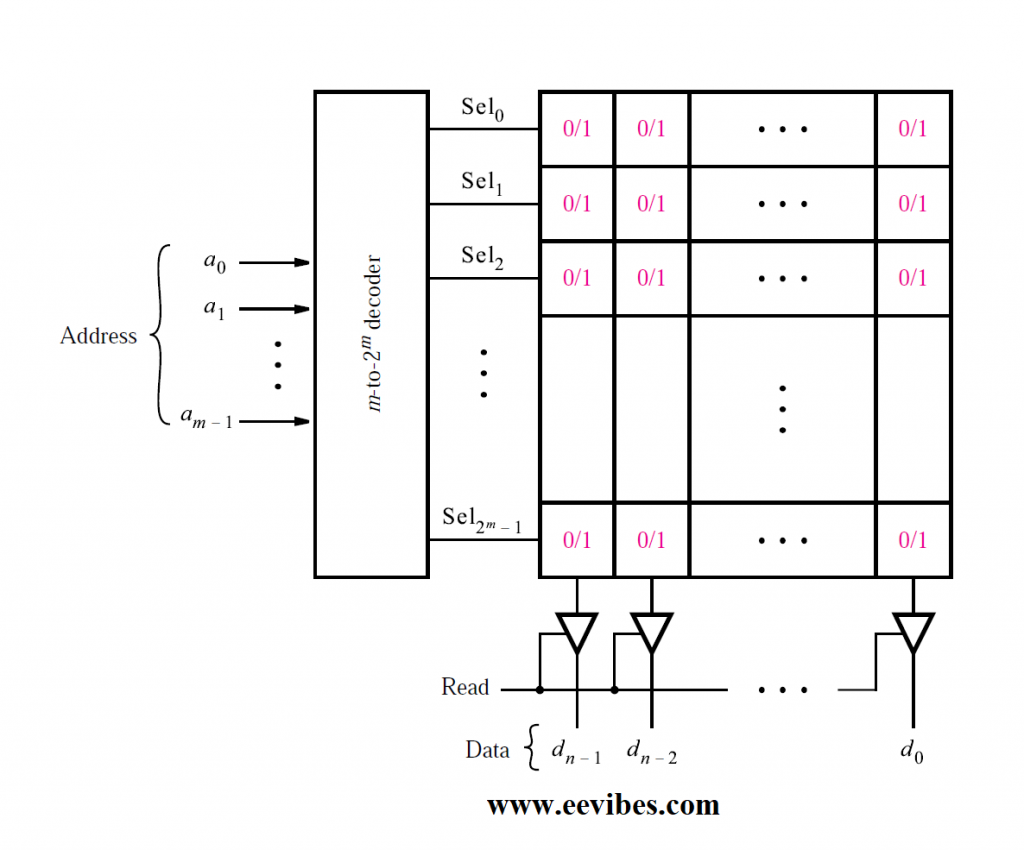Application of Decoder Circuits
What are the applications of decoder circuits? Memory blocks, which are used to store information, are one of the most important applications of decoders. These memory blocks are used in digital systems, such as computers, where enormous amounts of data must be stored electronically. One kind of a read-only memory block is a type of memory (ROM). A ROM is a collection of data. Each storage cell holds a single logic value, either 0 or 1, indefinitely.
A ROM block is demonstrated in the following figure.

The storage cells are organized in 2m rows with n storage cells in each row rows of cells As a result, each row stores n bits of data. Each row’s position in the ROM is identified by its address. The address row at the top of the ROM is shown in the diagram and the address 2^m- 1 is in the bottom row. The data recorded in the rows can be accessed by asserting the select lines, Sel0 to Sel2m−1. As shown in the figure, a decoder with m inputs and 2m outputs is used to generate the signals on the select lines.
Since the decoder’s inputs determine which address (row) is selected; they are known as the lines of address The data outputs of the ROM display the information contained in the row.
The data lines are designated as dn1,…, d0. As seen in above Figure, each data line has the ROM input labelled Read activates the related tri-state buffer. to gain access to the address of the required row is set on the address lines, and data from the ROM is read. The Read is set to 1.
Memory bricks come in a variety of shapes and sizes. The recorded information in a ROM can be read out of the storage cells but not modified (see problem 6.32). Another type of ROM allows information to be read from storage cells as well as written into them. Reading the material is a standard method, but writing requires a particular procedure. A programmable ROM is a memory block like this (PROM). EEPROM transistors are commonly used to implement storage cells in a PROM.
Also read here
- how to draw state diagram of sequential circuit?
- What is the magnitude comparator circuit? Design a 3 bit magnitude comparator circuit
- How to design a four bit adder-subtractor circuit?
- How to design a 4 bit magnitude comparator circuit?
- What is the difference between fan-in and fan-out?
- How to perform Packed BCD to ASCII conversion?
- What are the decoders? how are they different from encoders?
- How to implement Boolean functions using multiplexer?